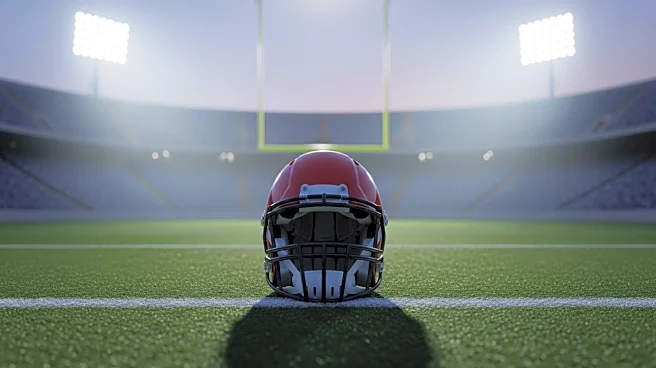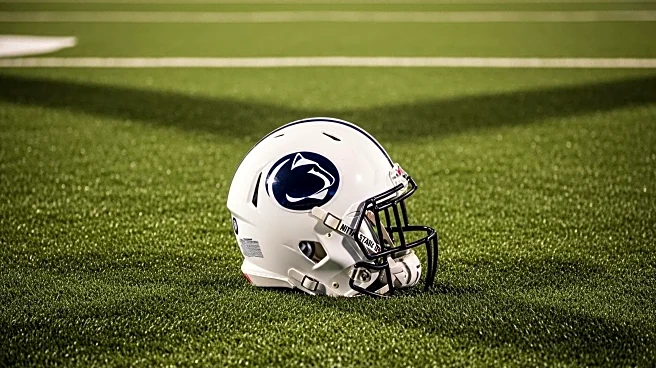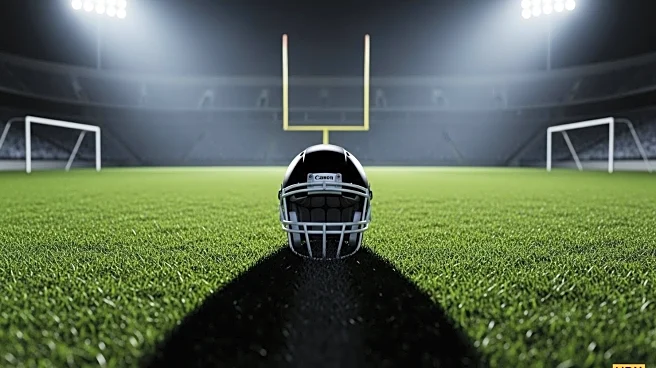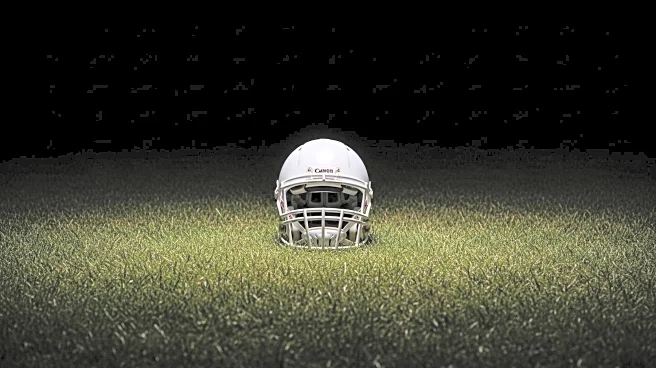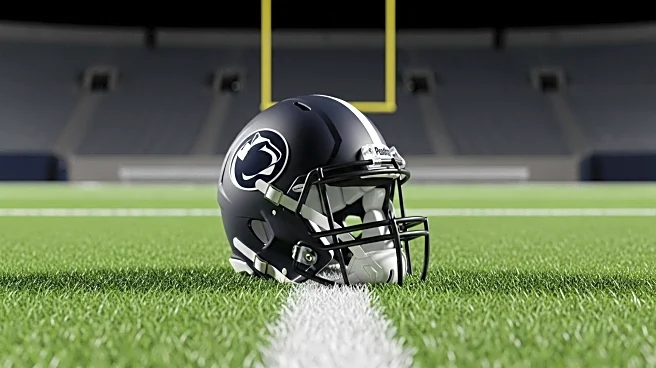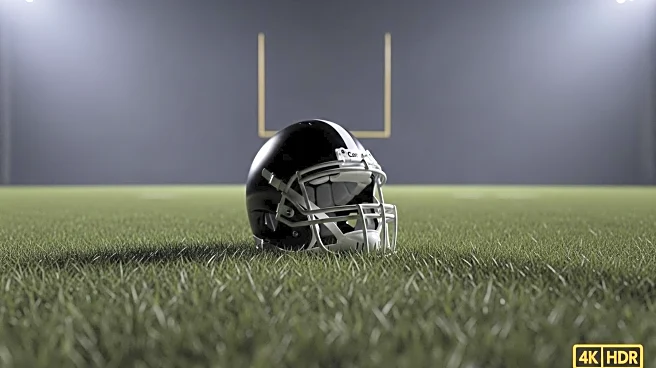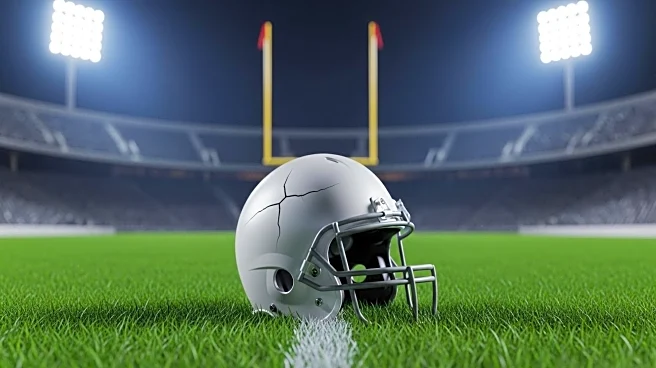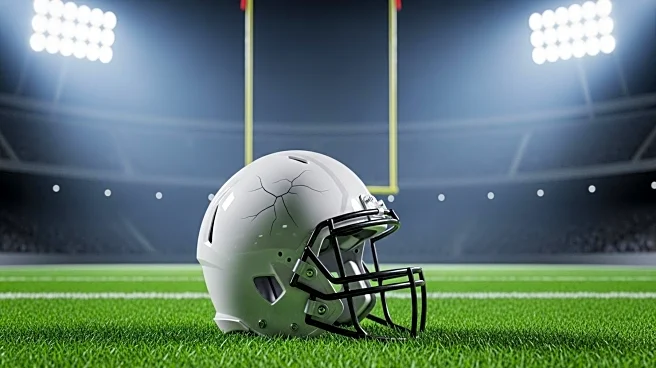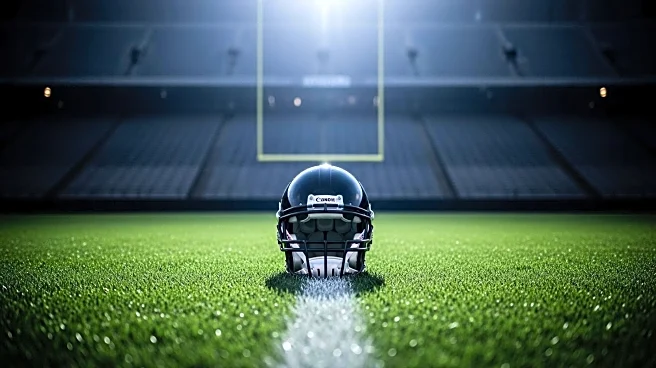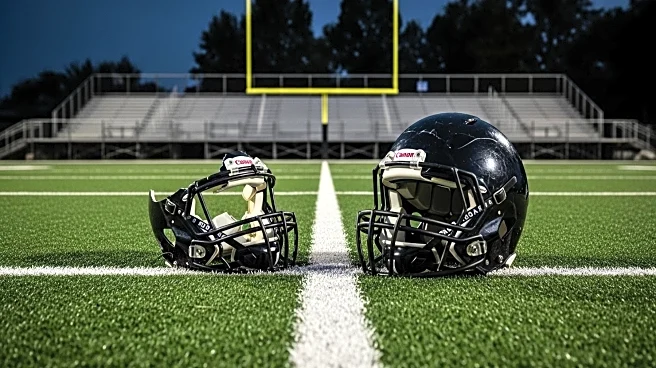What's Happening?
Penn State quarterback Drew Allar's college career has concluded following a severe ankle injury sustained during a game against Northwestern. The injury occurred late in the fourth quarter as Allar scrambled on a third down play, leading to his removal from the field and subsequent confirmation by head coach James Franklin that he will miss the remainder of the season. This development marks a significant setback for Penn State, which has experienced a series of losses after previously being ranked No. 3 in the nation. Allar, who opted to return for his senior year instead of entering the 2025 NFL Draft, has been a pivotal player for the team, starting all six games this season and contributing significantly to their performance.
Why It's Important?
The loss of Drew Allar is a critical blow to Penn State's football program, impacting their chances in the current season and potentially affecting their future prospects. Allar's decision to bypass the NFL Draft to play his senior year underscores his commitment to the team, making his abrupt exit due to injury particularly poignant. His absence leaves Penn State without a seasoned leader, which could influence their strategy and performance in upcoming games. Additionally, Allar's injury highlights the unpredictable nature of sports careers and the physical risks athletes face, which can alter career trajectories and team dynamics.
What's Next?
With Drew Allar's college career officially over, his focus will shift to preparing for the 2026 NFL Draft. Despite the setback, Allar is expected to attract interest from NFL teams, given his impressive college record. Penn State will need to adjust their lineup and strategy to compensate for the loss of their starting quarterback, potentially exploring new talent or altering their play style to maintain competitiveness. The team's response to this challenge will be crucial in determining their performance in the remainder of the season.
Beyond the Headlines
Allar's injury and subsequent career shift may prompt discussions on athlete safety and the pressures of collegiate sports. The incident could lead to increased scrutiny on how injuries are managed and the support systems in place for athletes facing career-altering events. Furthermore, it may influence conversations around the balance between pursuing professional opportunities and collegiate commitments, as athletes weigh the risks and rewards of their decisions.

